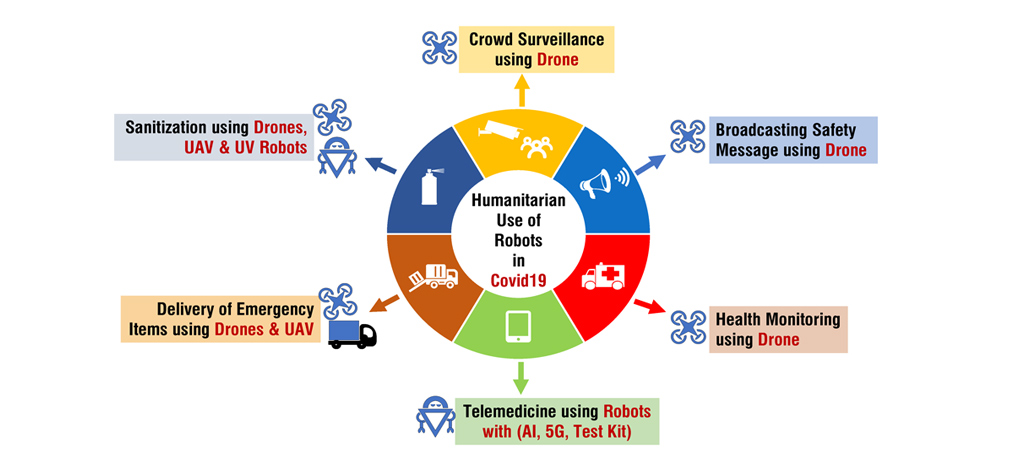Industry 4.0 or the ‘fourth industrial revolution’ is going to bring everyone on this earth to a reality where new technologies like IoT, Artificial Intelligence, Machine Learning, Cloud Computing, Blockchain, Smart Manufacturing, etc will be introduced on a massive scale and it will directly impact all aspects of the humankind. We’ll need to change the way we learn, the way we work, the way we communicate or even the way we live our daily life. In the normal process of coping up with the rapid technological development linked to the wide gamut of industry, economy, society and health, all employment sectors will look for the workforce having some significant skills precisely aligned to the development of modern technologies. First, the advancement of technologies will replace the low-skilled human workforce with automation and robotic tools. Second, a pool of skilled engineers will be required by the automation & robotic tool manufacturing & allied industries to support the need of different sectors. Consequently, the current engineering graduates will find it challenging to get a job if their present skills are out of sync with the current industry needs.
Engineering Skill Framework Set Globally for Industry 4.0
Combining the outcomes of several recent studies on the engineering skills framework set for Industry 4.0 by eighteen different countries under Washington Accord of International Engineering Alliance (India, Pakistan, Sri Lanka, China, Japan, Korea, Malaysia, Singapore, Taiwan, Australia, United Kingdom, United States, Canada, New Zealand, Russia, South Africa, Turkey and Ireland), ten key skills that will be in high demand after 2020 have been arranged in the order of their priority. Let’s have a look.
- Complex Problem Solving
Engineering companies face complex problems every day and after Industry 4.0 takes place it will tend to be more complex day by day. So, future engineers are expected to have expertise in the systematic analysis of complex problems.
- Critical Thinking
Industry 4.0 focuses more on the innovative approach to bring the new era of digital transformation. All companies need to update their mission & vision adaptively with the dynamic need of the hour. So, their engineering workforce should have expertise in the interpretation of different data leading to final decision-making.
- Creativity
This is one of the top skills that are driving Industry 4.0. The companies want their engineering workforce to always think out of the box and uniquely create new products to maximize the customized market reach.
- People Management
Industry 4.0 leaders need to disperse leadership and managerial responsibilities throughout the organizational network to sustain the rapid characteristic transformation of the companies. So, all budding engineers need to build their mindset to act as decision-makers irrespective of the hierarchy.
- Coordinating with Others
Not only management, but it is also required by the engineers to have good coordination skills as well to achieve common goals of different teams together to save time and resource of the companies under Industry 4.0.
- Emotional Intelligence
Along with the technical expertise, Industry 4.0 engineers need to be emotionally intelligent as well to feel sympathy and empathy for each other so that the working environment becomes helpful for everyone’s professional and personal growth in synchronization with the rapid change of new technology.
- Judgement and Decision-Making
Industry 4.0 engineers should also have the ability to identify an issue, gather data corresponding to it, analyze the collected data, make meaningful representations and draw conclusions effective for driving decisions.
- Service Orientation
Along with analytical skills, Industry 4.0 engineers need to be inclined towards providing the best engineering solutions to their clients. This requires them to have the ability to connect to their customers for a more effective and efficient resolution of customer issues and concerns.
- Negotiation Skill
Not only service orientation, but Industry 4.0 engineers should also have good negotiating capabilities over multiple digital platforms to establish a mutually beneficial relationship between the organization and its clients.
- Cognitive Flexibility
An Industry 4.0 engineer needs to have the ability to adapt easily to any working environment changes, operating role switching, changes in consumer demands, and technological advancements.
Need for the Change
An immediate change in engineering education policy has to take place worldwide that would sustain the professional development of a budding engineer following these 10 skillsets. The engineering students must be facilitated with proper upskilling & reskilling training by the higher educational institutions, governments & industries to ensure their employability in the advent of much-awaited Industry 4.0.
Further Readings
- World Economic Forum, “The Future of Jobs Report 2018”
http://www3.weforum.org/docs/WEF_Future_of_Jobs_2018.pdf
- The Washington Accord
https://www.ieagreements.org/accords/washington/
- John Clemons, “The Next Generation Of Industry 4.0”, Forbes Technology Council,




